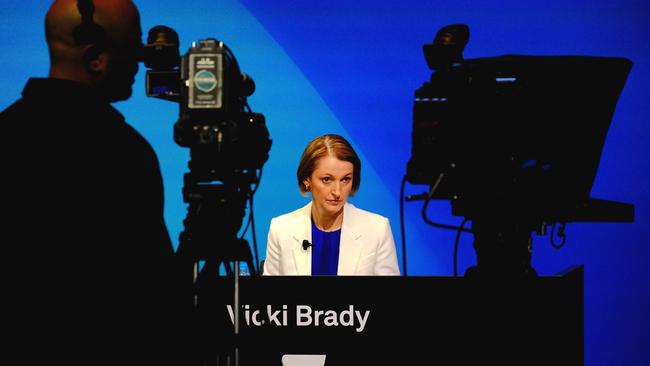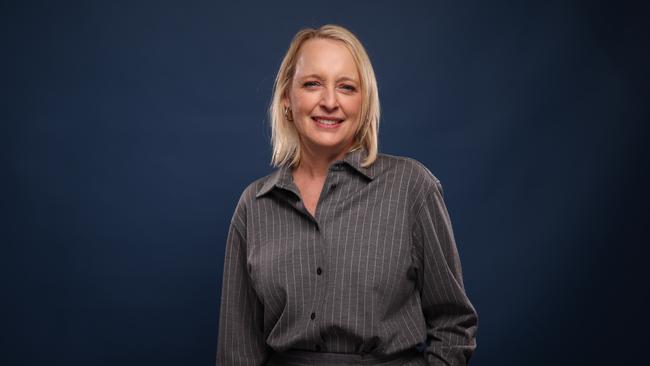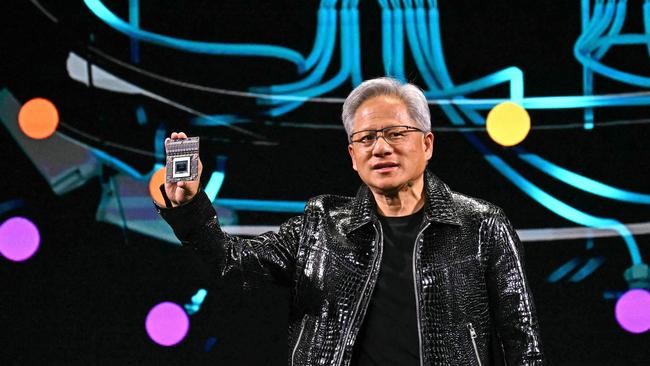Why Telstra’s boss is taking a different approach to building AI
Telstra chief Vicki Brady has more than a hundred ways which AI can be used across the telco and now she wants the technology to be fast tracked.

Telstra CEO Vicki Brady was among the first Australian corporate bosses to start using artificial intelligence. Now she believes it’s time for a different approach when it comes to deploying the technology across the telco major.
And that is built around the simple idea that in order to move faster and be the best, she can’t do everything.
To do this, Brady wanted someone with real skin in the game. This led to the creation of a joint venture with global consultant Accenture that has a mission to drive all things AI through Telstra.
The $700m, multi-year deal is among the first of its kind at scale in Australia where both Telstra and Accenture have equity in a stand-alone business unit inside the telco that will directly employ hundreds of technology staff from across both organisations.

This structure is different from an outsourcing agreement or a supplier deal in that it gives clear lines of accountability and project goals, Brady says. Importantly, Accenture brings its global horsepower to AI, and this includes training Telstra’s tech team from day one with the very latest tools that are yet to arrive in Australia.
Essentially, Brady is creating a new tactical team inside her telco with the job of building AI into all parts of the business. This will involve simplifying processes to using data in a more intuitive way.
“We’ve been at the forefront in Australia of applying AI inside our business. But what became evident in the last two years is just how fast things are moving,” Brady tells The Australian.
“We could go ahead and deliver it as is, as we’re doing today, without this joint venture, but it would take us much, much longer. We need to make a bold change … so we can really tap into those global capabilities.
“This really leapfrogs us into a different position.”
Scale play
Corporate chiefs universally agree that AI will fundamentally change business. Where there is less certainty is on the how, with much of AI’s functions still being used as an experimental play rather than being deployed at scale in the real world. Australian corporates have been reluctant to use AI in customer-facing roles, with much of the tech still confined to the back office.
Brady says Telstra currently has about 100 use cases for AI under way. This ranges from internal chat bots for frontline staff and smart fixes to monitor the telco’s massive mobile network. Frauds and scams are another big area for use. The creation of the venture will sharply accelerate the ability to advance each one of the projects while bringing more to life.
The New York-listed Accenture increasingly has been making waves in the AI space. It has committed $3bn to AI, including on acquisitions and building specialist teams including in Silicon Valley, where most of the action is.

Its AI push made a splash just last week. Global Accenture boss Julie Sweet was in Las Vegas alongside Jensen Huang, CEO of chipmaker Nvidia, to launch the next phase of their long-running partnership. The two showcased their “warehouse of the future” project with smart warehouse operator Kion, offering the first look at the large-scale use of AI for industry. The project is designed to slash operating costs by vastly improving logistics planning and using robotics to cut back on labour.
In his keynote speech, Huang highlighted the warehouse project as one of the next growth engines for Nvidia, the chip company that’s providing the computing horsepower needed to drive AI. Sweet also presented to CES, where she outlined the need for businesses to start scaling up.
Speaking to The Australian from her home just outside Washington DC, Sweet says the two biggest things today that prevent AI being deployed across businesses is access to the right data and access to the best talent.
“I’ve got 60,000 data and AI professionals around the world, including in Silicon Valley, who are not only bringing the expertise today, but we’re also investing in the next generation of tools,” Sweet says. “So investment is really important and talent is really important.”
She pointed to the Nvidia warehouse project as an example of what Accenture could bring to the table: practical concepts to robotics and physical AI.
Sweet says at a global level the best companies are approaching AI as a tool to create value faster, rather than something to drive savings.
“So AI has amazing powers for efficiencies, but this is about a competitive advantage for Telstra,” she says.
“This is going to create incredible customer experiences. It is going to create an even better network, and that is growth.
“Telstra has got a great track record over many tech cycles of understanding the difference between technology and how you use technology to create value.”
Bank bet
In Australia, banks have been the other big adopters of the technology, particularly in the fight against frauds and scams.
Other applications are happening behind the scenes. In November, Commonwealth Bank CEO Matt Comyn pointed to call centre wait times being cut by 40 per cent due to AI-powered technology. AI was also resulting in a cheaper cost to serve customers. Comyn says CBA is developing a further 50 use cases for AI to be deployed across the bank.
ANZ recently revealed that as much as 10 per cent of the coding being used on the new ANZ Plus banking platform was being written by AI technology. Others, including National Australia Bank, have outlined an ambition to increase tech spending.

The approach as a joint venture allows Telstra to hit its goal of slashing the number of tech vendors from about 30 currently as it simplifies the business. The AI venture will be 60 per cent-owned by Accenture, while Telstra will hold the balance. Under the terms, Telstra retains control over its data and AI strategy. Telstra’s existing AI-related staff will be offered employment in the venture. There’s no net reduction of jobs.
On the wider issue of how AI will affect employment, Brady is upfront that there will jobs lost as workflows and jobs ultimately change as a result of AI. “As we think about Telstra more broadly we would expect over time we will drive real efficiencies in here, but that would be the case with or without the joint venture,” she says.
The Accenture agreement comes amid a backdrop of Brady putting the finishing touches on a new strategy plan – expected to be called T30 – that is likely to set down a new range of savings and other targets. That comes on the back of her T25 program that finishes up this year and has already involved sweeping changes.
eric.johnston@news.com.au
Originally published as Why Telstra’s boss is taking a different approach to building AI



